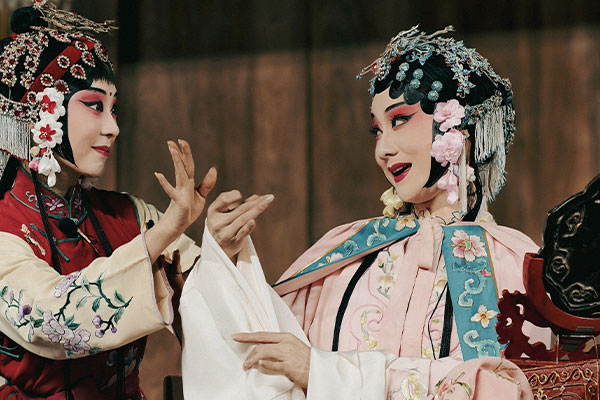Chinese Intangible Cultural Heritage - Kunqu Opera
Introduction
Kunqu Opera, also known as "Kunju," is one of the oldest forms of traditional Chinese theater, revered as the "ancestor of all operas." Renowned for its delicate performances, elegant vocal styles, and profound literary depth, Kunqu Opera is a treasure of Chinese traditional performing arts. It is not only a theatrical art form but also an important carrier of classical Chinese culture. Recognized by UNESCO as a "Masterpiece of the Oral and Intangible Heritage of Humanity," Kunqu Opera holds a special place in global cultural heritage.
History
The history of Kunqu Opera dates back to the late Yuan and early Ming Dynasties in the 14th century, originating in the Kunshan region of Jiangsu Province. During the Jiajing era of the Ming Dynasty, Kunqu Opera gradually matured and gained popularity across the country. By the Kangxi and Qianlong periods of the Qing Dynasty, it reached its peak, becoming a beloved art form in both imperial courts and among the common people. In the early 20th century, Kunqu Opera experienced a decline but was revitalized and protected after the founding of the People's Republic of China, regaining its vitality.
Regional Characteristics
Although Kunqu Opera originated in Kunshan, Jiangsu Province, its influence spread nationwide, particularly in the Jiangnan region (such as Suzhou, Hangzhou, and Shanghai). Suzhou, as one of the important birthplaces of Kunqu Opera, boasts a rich cultural heritage and performance tradition. The performance style of Kunqu Opera is delicate and graceful, reflecting the distinctive cultural characteristics of the Jiangnan region.
Cultural Significance
Kunqu Opera is an integral part of Chinese traditional culture. Its repertoire often draws from classical literary masterpieces, historical stories, and folk legends, such as The Peony Pavilion, The Palace of Eternal Youth, and The Peach Blossom Fan. The librettos of Kunqu Opera are elegant, the music is beautiful, and the performances are refined, integrating elements of literature, music, dance, and visual arts. It holds immense artistic and cultural value.
Performing Arts
The performing arts of Kunqu Opera are highly refined, encompassing four main aspects: singing, recitation, acting, and acrobatics. The singing style, known as "Shuimo Tune," is delicate and expressive. Recitation emphasizes phonetics and rhythm, creating a unique musical aesthetic. Acting refers to the physical movements and facial expressions of the performers, focusing on subtlety and vividness. Acrobatics showcase exceptional skills. Additionally, the costumes and makeup of Kunqu Opera are meticulously designed, embodying classical aesthetics.
Preservation and Innovation
As a Chinese Intangible Cultural Heritage, Kunqu Opera has received widespread attention and protection from the state and society. Many local governments and cultural institutions actively promote the inheritance and development of Kunqu Opera, nurturing a new generation of performers. At the same time, Kunqu Opera continues to innovate, integrating modern artistic forms and demonstrating renewed vitality.
Conclusion
Kunqu Opera is a treasure of Chinese traditional culture, carrying a rich historical and cultural legacy. By preserving and passing down this ancient art form, we can not only appreciate the brilliance of Kunqu Opera performances but also gain a deeper understanding and appreciation of Chinese traditional culture.







